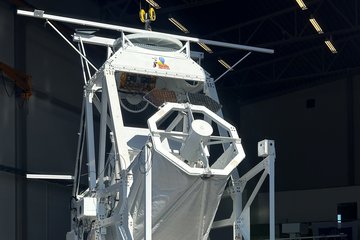All genres
1.
Journal Article
Imaging individual active regions on the Sun's far side with improved helioseismic holography. Astronomy and Astrophysics 669, p. A89 (2023)
2.
Journal Article
Imaging individual active regions on the Sun's far side with improved helioseismic holography. Astronomy and Astrophysics 669, p. A89 (2023)
3.
Journal Article
Direct assessment of SDO/HMI helioseismology of active regions on the Sun's far side using SO/PHI magnetograms. Astronomy and Astrophysics 674, p. A183 (2023)
4.
Journal Article
How to Estimate the Far-Side Open Flux Using STEREO Coronal Holes. Solar Physics 296, 141 (2021)
5.
Journal Article
Signal and noise in helioseismic holography. Astronomy and Astrophysics 620, A136 (2018)
6.
Journal Article
Ghost Images in Helioseismic Holography? Toy Models in a Uniform Medium. Solar Physics 293, p. 17 (2018)
7.
Talk
Comparisons between Helioseismic Holography and Porter-Bojarski Holography. Rocks \& Stars II, Göttingen, Germany (2017)
8.
Talk
Comparisons between Helioseismic Holography and Porter-Bojarski Holography. Rocks \& Stars II, Göttingen, Germany (2017)
9.
Poster
Improved helioseismic imaging of the farside. Dynamics of the Sun and Stars: Honoring the Life and Work of Michael J. Thompson,, Boulder, USA (2019)
10.
Poster
A Possible Improvement on Helioseismic Holography. the many Scales of the Universe: Galaxies, their Suns, and their Planets - Annual Meeting of the Astronomische Gesellschaft 2017, Göttingen, Germany (2017)
11.
Thesis - PhD
Modeling experiments in helioseismic holography. Dissertation, 85 pp., Georg-August-Universität Göttingen (2018)











